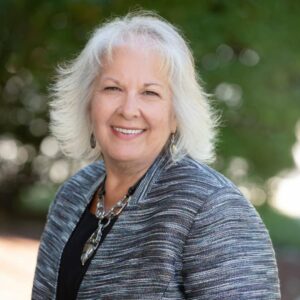One-on-one with… Doug Leidig
Doug Leidig, president and CEO of Asbury Communities, based in Germantown, Md., has committed a professional lifetime to senior living: for 32 years, he has worked exclusively in this arena. Last year, Leidig advanced from chief operating officer to the top leadership of the 90-year-old nonprofit system, which includes five continuing care retirement communities (CCRCs) in Maryland, Pennsylvania and Oklahoma. Long-Term Living recently spoke with Leidig about the CCRC market and its drive to address changing consumer preferences while preparing for future consumer demographics.
Is the demand for CCRCs increasing?
Since ’08 and ’09, there hasn’t been a lot of building and expansion going on in the CCRC world, (but) there isn’t a pent-up demand—yet. The pent-up demand will be in 10 to 15 years when the baby boomers start looking at us. I’m not sure there’s going to be enough of us to go around to meet that demand.
What changes are CCRCs making to meet consumer demand?
Renovations are largely related to the skilled nursing units, where they’re creating private rooms and private baths to make them much less medical and more homelike. The independent living units are continuously being refreshed, refurbished, updated and modernized.
The residents who live there don’t want to live in an older place. They want to see a refreshed common space. They want to see new services like bistros and coffee bars. You’re continuously renovating because you want to attract not only the new individuals but [serve] those who live there.
Do you foresee new entrance fee models?
There’s talk about people offering an equity-based model. A few CCRCs have experimented with this model, but it really hasn’t taken off yet. Rental models are going to be more and more attractive. People are going to want to do a rental model versus putting down a $250,000 [entrance] fee.
[But] it’s the services that come with that entrance fee that are going to be a change for the consumer. [Previously,] people coming into the CCRC wanted their monthly fee to have a meal plan [with] a certain amount of meals each month. Now, we’re seeing a lot of people who don’t want meal plans. They want to go to different places in the local community or different spots on the campus to eat. Or they travel a lot.
Will the entrance and monthly fees be pared down or stay robust?
Entrance fees are generally reflective of the housing market in your area. They’re not going to fluctuate a lot. You’re not going to offer a $500,000 entrance fee product if your average house [value] is $250,000. It’s going to be more on the other side with the monthly fee.
It’s really the monthly fee and what that covers. Does it cover the meal plan? Does it cover full access to the local university and their education? That’s where you’re going to see your fluffing up and skinnying down. People are going to say, “I want to come here, but I don’t want all of this. I want this.”
Do alternate fee plans lead to consumer confusion?
There’s definitely that potential, so you have to be savvy of your market. What we’re finding is two, maybe three, options are fine. If you start giving more than three options, people are not going to make a decision because they won’t know what to do.
Can people with dementia age in independent living units?
They will, but it depends on the progression of the disease. Early stages, yes, with support from home care. Obviously the biggest things you worry about are security, wandering and making sure the loved one is taken care of as an individual. It does happen now in the very early stages, but middle stages it’s definitely more along the lines of the assisted living. Who thought that 10 years ago that our nursing homes are (now) looking like what our hospitals did 10 years ago, and assisted living like what our skilled nursing cares were 10, 15 years ago. Logically speaking, you would think there’s going to be another progression.
Will future CCRC locations reflect the current trend of urban homesteading?
There are companies looking to take over portions of downtown areas to create a CCRC that’s integrated into the night life, the restaurants, the shops. We hear developers talking about the need for partners to go in and say, “Hey, we’re going to redevelop this whole area, and we’re going to have mixed use. We’re going to have retail, apartment living, townhouses, single family homes and a retirement community.”
What’s your take on LeadingAge’s proposal to change the acronym term "CCRC" to "Life Plan Community" (LPC)?
Moving forward, we’re going to continue to monitor how the industry embraces the term before embarking on any name changes. I know myself and other colleagues are taking that same approach. We’re going to wait and see. If you look at the research regarding what baby boomers want, baby boomers are not going to want to be called “seniors.” I heard baby boomers are not going to “retire,” they’re going to transition.
Sharon Schnall is a freelancer writer based in Chagrin Falls, Ohio.
I Advance Senior Care is the industry-leading source for practical, in-depth, business-building, and resident care information for owners, executives, administrators, and directors of nursing at assisted living communities, skilled nursing facilities, post-acute facilities, and continuing care retirement communities. The I Advance Senior Care editorial team and industry experts provide market analysis, strategic direction, policy commentary, clinical best-practices, business management, and technology breakthroughs.
I Advance Senior Care is part of the Institute for the Advancement of Senior Care and published by Plain-English Health Care.
Related Articles
Topics: Articles , Executive Leadership , Housing , Leadership , Operations











